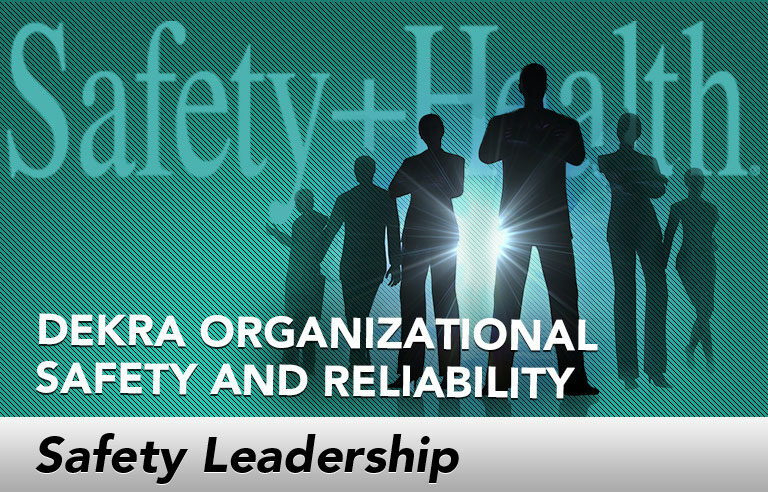Safety Leadership: Creating change – safely

Editor’s Note: Achieving and sustaining an injury-free workplace demands strong leadership. In this monthly column, experts from global consulting firm DEKRA Insight share their point of view on what leaders need to know to guide their organizations to safety excellence.
In last month’s article, we discussed the business imperatives of urgency and safe execution. Urgency drives organizations forward, and it’s what helps them thrive in a competitive world. On the front lines, however, urgency that isn’t tempered can undermine company goals, increase exposure to injury and destroy a healthy culture.
Getting a better sense of how urgency is used to create change in your organization can help improve exposure awareness and provide leaders with tools to effectively drive a culture of reliability. The trick is in being clear on where risk-taking is accepted and more untethered, as well as where risk-taking must be more tightly controlled and follow a management of change process.
Here are four considerations for leaders seeking to balance urgency and safe execution in the midst of change:
Match the message to the audience. Addressing urgency and efficiency with leadership requires an approach different from one targeting front-line personnel. Carefully consider your audience and adjust the message accordingly. It’s perfectly fine to discuss the need for urgency with one audience and avoid unhelpful urgency with another. Emphasize the power of “and” – challenge people to do tasks more expeditiously and in ways that preserve or enhance safety, quality and customer service.
Create the mindset for making safe decisions. When front-line leaders and employees are dealing with a tricky problem, how do you want them to balance your value for safety and quality (flawless execution) with your value for performance and production (urgency)? If it’s unclear, then execution will be highly variable. One of the biggest challenges we see in organizations is a lack of clarity about priorities when values and goals conflict. It’s incumbent upon senior leaders to provide this clarity and ensure it’s woven throughout operations so everyone knows what priority should prevail and what course you expect them to take.
Provide a structure to manage execution during change. Before sending messages about the urgent need for change, leaders must be sure that a structure is in place for how changes will be addressed at the worker level. Although structure may seem to be the enemy of change and speed, it’s only an enemy if the organization creates structure that hinders. Telling people you want innovation and change isn’t enough. At the operational level, you must create mechanisms that set forth how ideas will flow and how new procedures will be tested. Additionally, there needs to be a feedback loop to ensure people providing input and ideas know the status of their development on an ongoing basis. At the working level, the process for change will need to be more systematic because of the danger of introducing increased exposure and potentially negative impacts on safety and quality.
Celebrate flawless execution. Leadership needs to recognize and celebrate change. However, decisions not to make a change for the sake of safety or quality also need to be recognized. In some situations, leaving processes the same might be the best decision. Not all change ideas are good, especially those that increase exposure or reduce quality. A good change-management system will sometimes find flaws in a proposed change, which can lead to a better change. When this happens, leaders need to acknowledge the “catch” as a sign that the process worked. This acknowledgement reinforces the importance of safety and quality, while also reinforcing the case for structure to shape and monitor change.
This article represents the views of the authors and should not be construed as a National Safety Council endorsement.
 Don Groover, CIH (retired), CSP, is senior vice president of DEKRA Insight. He develops solutions that leverage the latest technology and advancements to improve safety performance in client organizations.
Don Groover, CIH (retired), CSP, is senior vice president of DEKRA Insight. He develops solutions that leverage the latest technology and advancements to improve safety performance in client organizations.
 Mike Mangan is vice president of Research and Development for DEKRA Organizational Safety and Reliability. He facilitates global thought leadership and technology development in support of safer workplaces.
Mike Mangan is vice president of Research and Development for DEKRA Organizational Safety and Reliability. He facilitates global thought leadership and technology development in support of safer workplaces.
Direct to your inbox: Sign up to be notified in email about new "Safety Leadership" columns.
Post a comment to this article
Safety+Health welcomes comments that promote respectful dialogue. Please stay on topic. Comments that contain personal attacks, profanity or abusive language – or those aggressively promoting products or services – will be removed. We reserve the right to determine which comments violate our comment policy. (Anonymous comments are welcome; merely skip the “name” field in the comment box. An email address is required but will not be included with your comment.)

